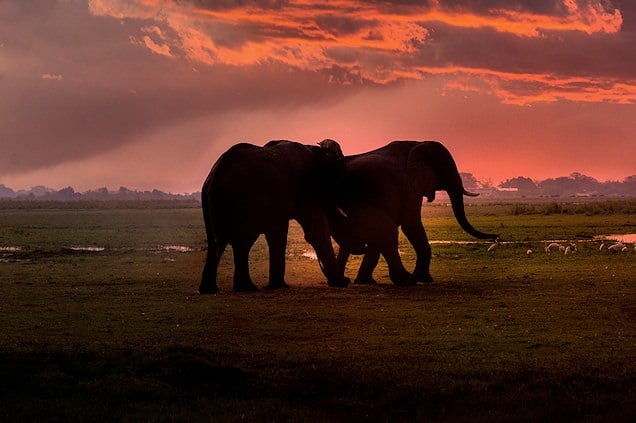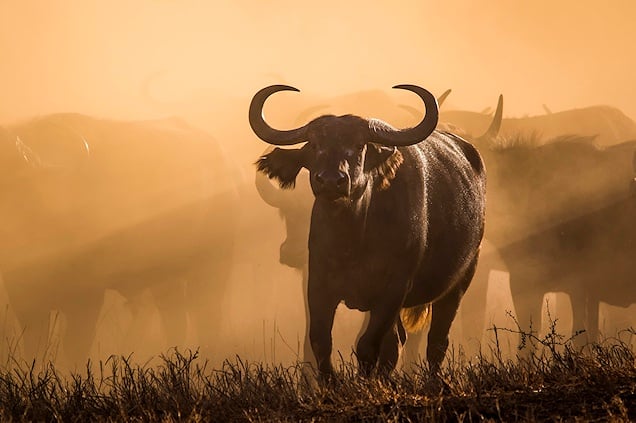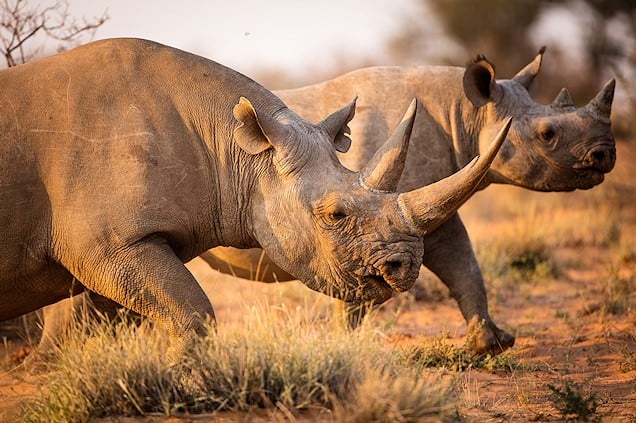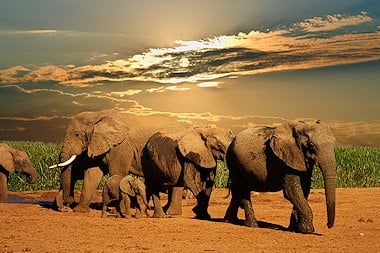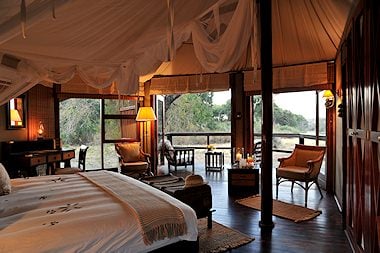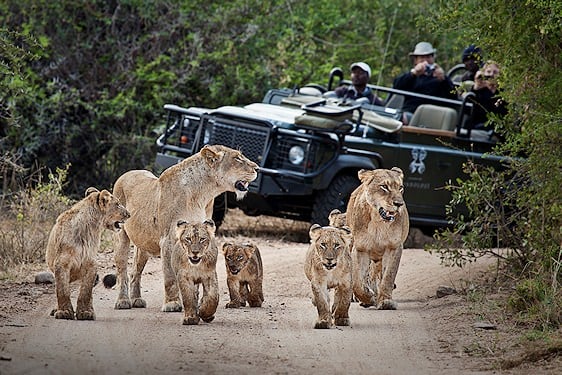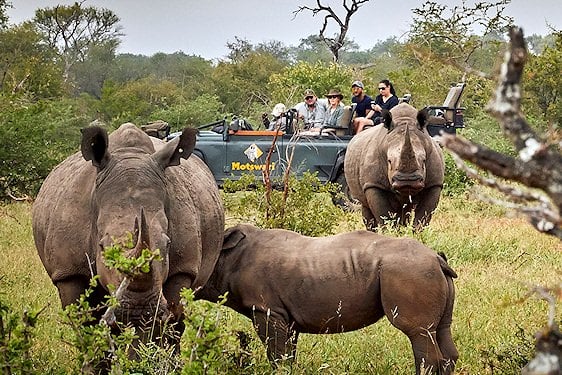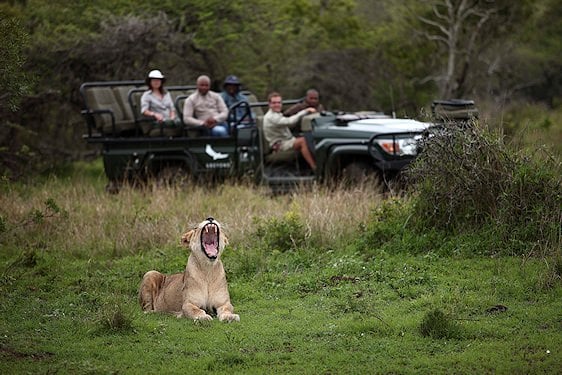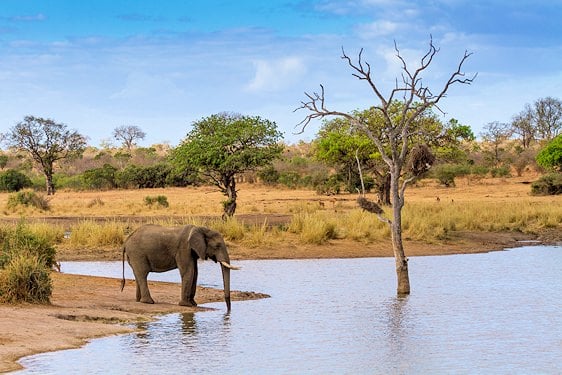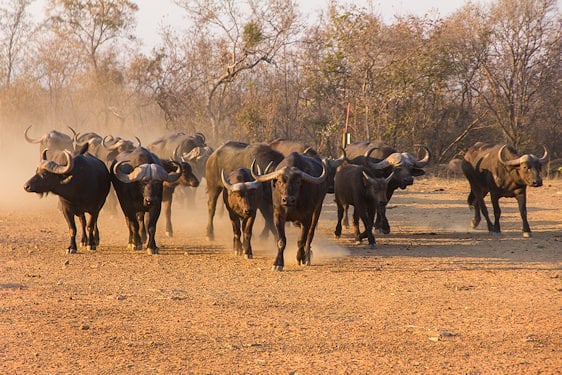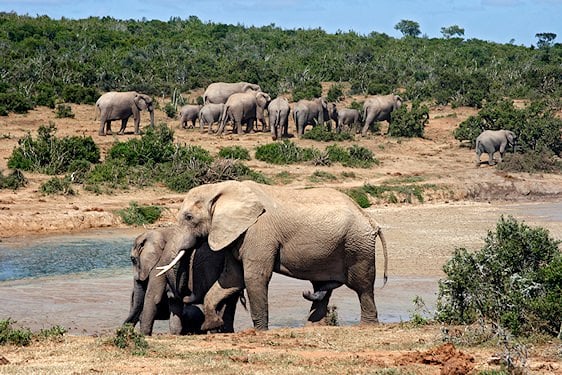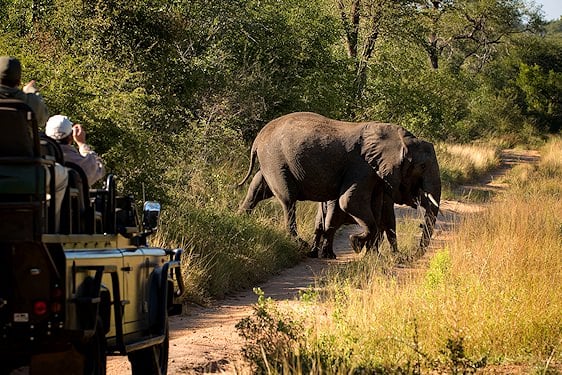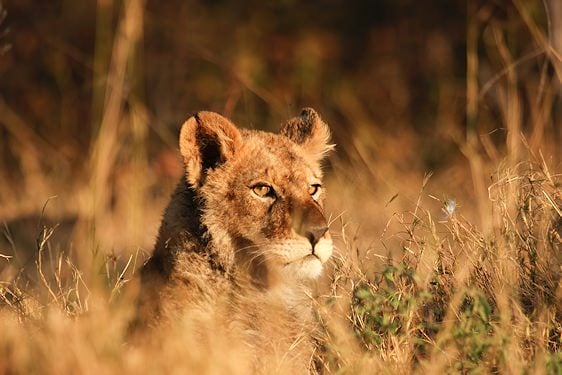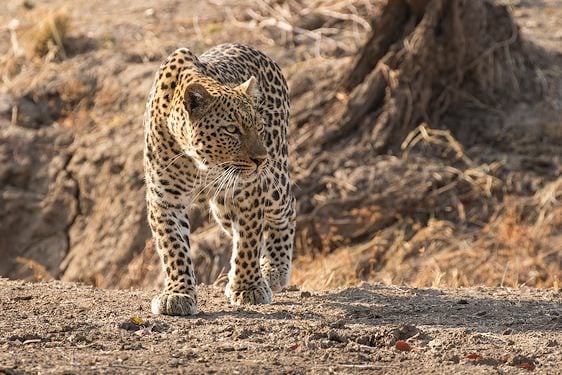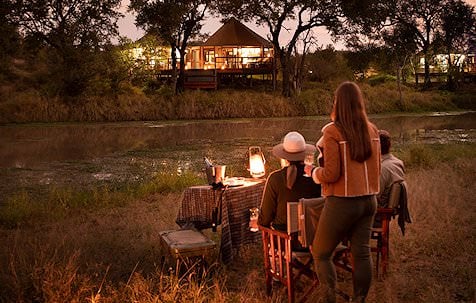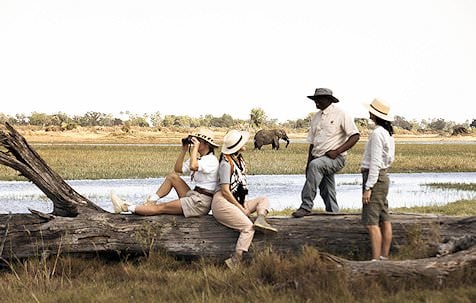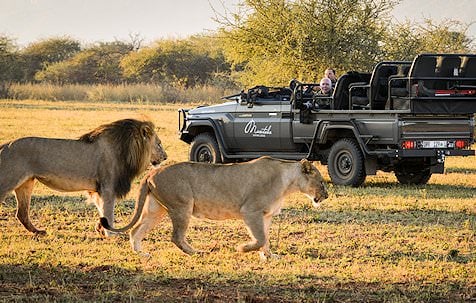Legendary
The Big Five include the lion, leopard, elephant, rhino, and buffalo—the most impressive wildlife seen on safari in Africa. They are notorious as the most dangerous of Africa's large animal species. Since 1998, African Sky has offered private overland safaris and luxury fly-in packages that will bring you close to these mighty animals. These majestic animals have captured the imaginations of visitors to Africa for centuries. You would only need one encounter with a member of this imposing quintet to understand why.
There are roughly 8,000 lions in Southern Africa, giving you a good chance of seeing them in a pride or on a hunt. These big cats are a top highlight of any safari, and guests will quickly understand why they are known as the King of the Jungle.
Large herds of elephants roam freely in wilderness areas, especially in Botswana and South Africa, and are among the easiest of the Big Five to spot. Their colossal stature and intelligent behavior make them a true spectacle to behold.
Leopards are difficult but not impossible to spot due to their elusive behavior, which adds to the thrill of adventure. They prefer a private life near rocky outcrops and dense trees alongside rivers. Although not as large as lions, leopards are fierce predators whose strength should not be underestimated.
Buffalo like to move around in large herds and you are sure to spot them while on safari in Southern Africa. It may appear harmless but has earned the name "black death", because of it's agressive temper. South Africa and Botswana have the largest buffalo populations.
Southern Africa is home to both black rhinos and white rhinos. The most notable differences include the shape of their lips as well as some behavioral traits. Kruger National Park and Etosha National Park host both species, while other parks may have only one.
Best Big 5 Safari Packages
These itineraries will likely bring you close contact with Africa's imposing animals.
15 Days
From:
USD 6,023 - 8,955
pp
Personal and Comfortable
Code: S29
Explore South Africa's national parks on a comprehensive private overland safari, which includes Kruger National Park, Addo Elephant Park, Hluhluwe, and the Garden Route National Park.
7 Days
From:
USD 12,690 - 16,176
pp
Top-End Luxury
Code: S06
This package features two of South Africa's top destinations. It combines Cape Town with a Big Five safari in the Sabi Sand.
5 Days
From:
USD 4,400 - 5,596
pp
Personal and Comfortable
Code: KP11
Enjoy Big 5 safaris from a base in a private concession within the heart of the Kruger National Park. Accommodation is at personal lodges.
View All Safaris
Why Choose A Big Five Safari
Incredible Encounters
Big Five encounters are all characterized by one thing: awe! Awe at the stealth and beauty of the leopard, awe at the gentility of the giant elephant, awe at the fierce majesty and hunting prowess of a pride of lions, awe at the almost casual yet commanding power of a herd of Cape buffalo, and awe at the prehistoric appearance of the endangered rhino.
Top Safari Areas & Lodges
Where you find the continent's supreme five animals, you will also find the continent's ultimate lodges. The safari areas need to be first-class to sustain such majesty, and the lodges they host are of equal stature. Here, you can relish encounters with these amazing animals, beautiful wilderness areas, and lavish accommodations.
Photographic Opportunities
If your safari photographs involve the Big Five, they will become all the more memorable. A leopard stalking through the bush or high up in a tree, a family of elephants crossing a river or gamboling in the current, a tender moment between a lioness and her cubs, or an army of buffalo blocking out the landscape with their black bodies—photographic opportunities abound.
Top Private Game Reserves
The private game reserves are known for their ultra-luxurious lodgings. With your plush accommodations, however, you will enjoy the company of an experienced ranger (and often a tracker) during your game drives, ensuring unforgettable sightings of the Big 5.
Sabi Sand is one of the premier safari destinations in the Greater Kruger National Park.
Vast open plains where large herds of animals roam freely including the famous Big Five.
Phinda is a biodiverse wildlife sanctuary in KwaZulu-Natal and is inhabited by the Big Five.
Unique lanscapes, incredible wildlife, and luxury lodges abound in this popular conservation destination.
A splendid wilderness area with a focus on conservation and large populations of animals due to the Klaerie River.
Welgevonden is a UNESCO World Heritage Site in the Waterberg Biosphere, known for its diverse terrain teeming with wildlife.
Top National Parks
Southern Africa's Big Five-bearing national parks are timeless, authentically wild spaces where you can enjoy a guided overland safari that offers great value for money. The Big Five roam these breathtaking landscapes in significant numbers, augmenting your chances of sightings.
The Kruger Park is South Africa's flagship national park and an extremely popular safari destination.
Hluhluwe has a strong focus on rhino conservation. The park has forested hills in the north and open savannah in the south.
Addo Elephant National Park is a sanctuary for over 600 elephants, along with a wide range of other wildlife in the Eastern Cape.
Madikwe is malaria-free and exclusive, offering uncrowded game drives and exceptional wildlife encounters.
Chobe is Botswana's most visited park, with highlights including the Chobe River, striking sunsets, and large herds of elephants..
South Luangwa is known for walking safaris and its untamed, unspoilt wilderness away from tourist hubs.
Big Five Experiences to Savor

A Pride of Lions on a Kill
Lionesses are incredibly efficient hunters, and watching these lithe cats work as a team to bring down their quarry is a thrilling experience. If they are successful, get comfortable - lions can feast for quite some time, and you'll want to be there when the cubs arrive for their share of the meal.
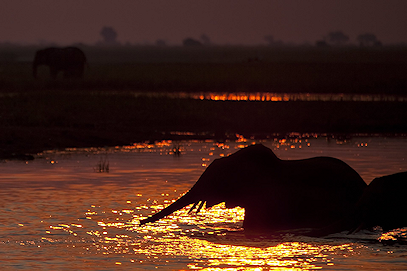
The Emotional Nature of Elephants
These gentle giants are compassionate creatures who often share tender moments. It is enjoyable to observe a family of elephants and learn about the unique relationship structures within the herds. Elephant calves are particularly delightful to watch.

Encountering the Endangered Rhino
As rhino numbers continue to dwindle, rhino encounters become all the more precious—regardless of which species (white or black) they may be. Rhinos with calves are always more wary and protective, but witnessing their affectionate interactions will provide lasting memories.
FAQ
Where is the best place to enjoy a Big Five safari?
South Africa's Greater Kruger National Park (including the park itself and the private game reserves that share an unfenced border with it) is the top Big Five safari area on the continent.
Will it be dangerous to come into contact with the Big Five?
No, as long as you always heed the advice of your ranger. Do not approach ANY wild animals by yourself (Big Five or not), keep your voice low and calm during sightings and avoid sudden movements that would alter the shape of the game viewing vehicle.
Why are rhinos limited to only a handful of safari areas?
Due to rampant poaching (as the result of the high demand for illegal rhino horn on the black market), rhino numbers have dwindled severely. These majestic animals are now highly endangered.
Could I see the Big Five on a walking safari?
The herbivores - buffalo, elephant and rhino - are occasionally encountered on walking safaris and observed at a safe distance.
Which member of the Big Five is most commonly encountered?
Elephants have healthy populations across Southern Africa and are the most commonly encountered members of the Big Five.
Which member of the Big Five is the most difficult to spot?
Despite the dwindling numbers of the rhino, the elusive leopard remains the most difficult member of the Big Five to spot. This is largely due to its shy, solitary nature and fantastic camouflage abilities.
Will I see the full Big Five contingent during my safari?
Should you be visiting an area with a high density of wildlife, your odds are very good. However, these are wild animals, and you are not visiting a zoo - your sightings are dependent on their movements.
Which member of the Big Five is the most fearsome?
It depends on who you ask, but most rangers will refer to the Cape buffalo as being the most unpredictable and therefore the most dangerous member of the Big Five.
Who chose the Big Five, and why were they named as such?
The Big Five were chosen and named by the big game hunters of yesteryear. These animals were determined as the most difficult and dangerous to hunt on foot.
If a safari area in not home to the Big Five, is it still worth visiting?
Yes - there is much more to an African safari than the Big Five. So many other captivating creatures inhabit the continent's wilderness areas, and so many spectacular backdrops would be missed if travelers focused on the Big Five alone.
The Kruger National Park's diversity is legendary amongst safari enthusiasts, boasting 147 different species of mammals.
Our luxury safaris combine exceptional game viewing and stunning wilderness areas with sumptuous accommodations.
No other country in Southern Africa offers the diversity of national parks and private game reserves as South Africa.
The African lodges included in our safari packages range from intimate tented camps to extravagant safari palaces.


